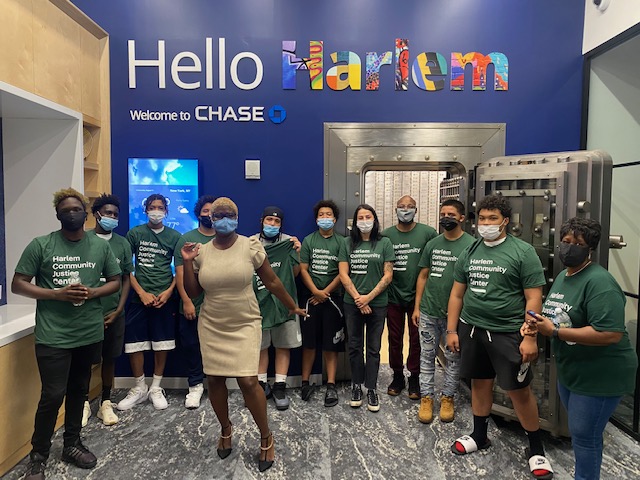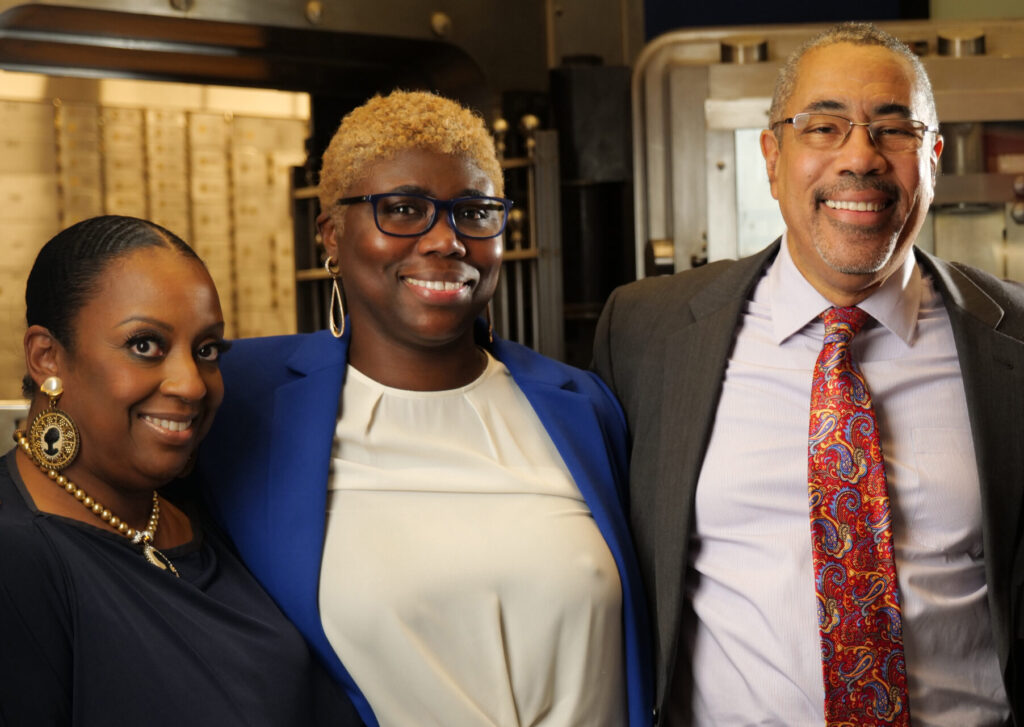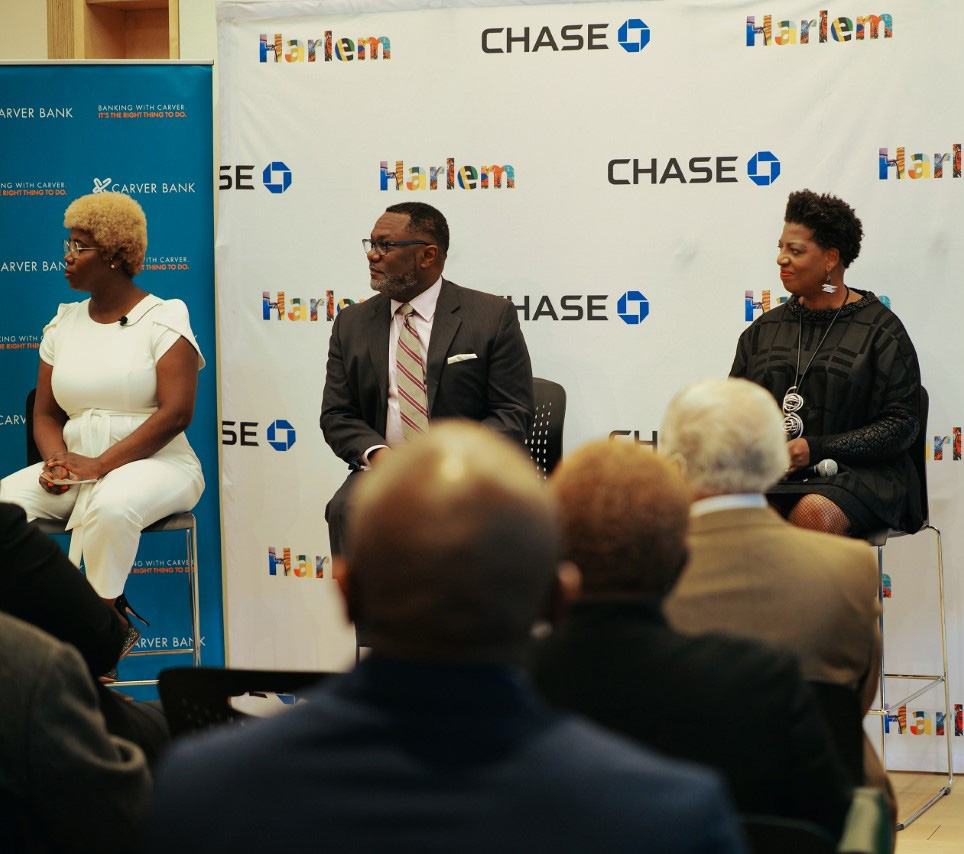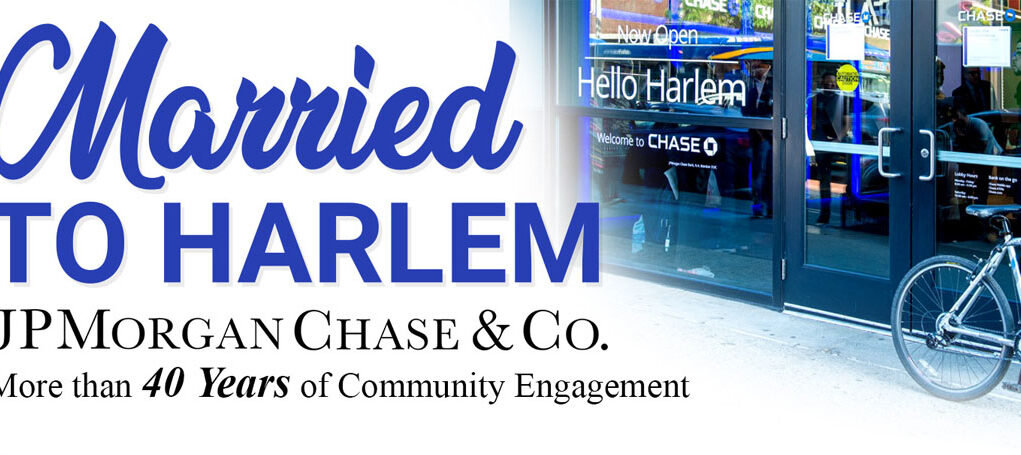In the Summer of 2019, JPMorgan Chase opened its community banking center in Harlem, the first of its kind in the nation. The uninitiated may have mistakenly believed the occasion marked a sort of new engagement with the banking institution and the Harlem community. Wrong! In fact, it is more accurate to say that the community banking center came out of the bank’s 40 years plus “marriage” to Harlem with vows of closing the racial equity wealth gap and reimagining the community as an oasis of home ownership and upward financial mobility.

With its rich history in Harlem dating back to the 1960s, Chase is credited with putting the first ATM in the area on 135th Street. To achieve its wealth equity goals, the bank focused on creating partnerships with community organizations the likes of the Greater Harlem Chamber of Commerce, Harlem Congregations for Community Improvement (HCCI), Carver Federal Bank, and The New York Christian Times. Together with these stakeholders, Chase continues to engage with the community and evaluate what resources are needed to sustain Harlem’s accelerated growth.
An outshoot of these partnerships are initiatives like the community banking center among others which opened with an announcement of a $550,000 commitment to Harlem non-profits and minority- and women-owned businesses, with an emphasis on Black-owned businesses. This was part of the bank’s $150 million Small Business Forward initiative. The programs and services at the community bank run the gamut from workshops on budgeting, using credit wisely, growing and managing credit, and first-time home buying.

Nichol King serves as Executive Director for Community Banking of the Northeast at the branch located at 55 West 125th Street in the heart of Harlem, USA. She has more than 15 years history with the bank, starting in the retail division and working her way up through the ranks to her current position. She spoke to The Christian Times about the fertile community partnerships the bank has forged over the years.
“My role as the community banking manager is to be a bridge between the community and the bank,” she said. “So the first thing I would like Harlem residents to understand is that JPMorgan Chase is truly the bank for all,” she said, adding, “It doesn’t matter where you are on the financial spectrum – we are here to help you realize your financial goals, whether it’s home ownership, starting or growing a business, increasing savings or retiring comfortably.”
This year the Greater Harlem Chamber of Commerce – one of the longest continuously active Chambers of Commerce in the nation – is celebrating its 125th Anniversary. The organization has been a legacy partner with Chase Bank for more than 20 years and together they have created a lot of initiatives aimed at improving the financial health of Harlemites. This partnership stems from the shared vision of both organizations to help the residents of Harlem advance and grow the area’s economy.
“We are very proud of our relationship with GHCC and we are so happy to be celebrating this milestone anniversary with them during this Black History month,” said King. “Through our involvement with GHCC and its President/CEO Lloyd Williams, we have been able to gain a lot of insight into the Harlem community. In fact, GHCC was at the table in the brainstorming discussions about creating the community branch and the programming we were going to make available. We leaned heavily on Lloyd and the story of how The Chamber has been embedded in the fabric of Harlem for over 125 years. In addition, JPMorgan Chase has been a legacy sponsor of Harlem Week for 25 years. As such we have been locked in arms with The Chamber every step of the way in order to double down and support community residents to thrive economically,” said King.
Recognizing that the Black Church is an anchor in communities like Harlem, Bed-Stuy, and Crown Heights, King said that Chase reached out to form a partnership with The New York Christian Times. “Rev. Dillon is a trusted partner who we rely on to gut check us and make sure we are connecting with the community and at a very local level,” she said. “In 2021 we did a media listening tour and there again we turned to the guidance of Rev. Dillon and The Christian Times. We value this partnership not just to help us tell the story of JPMorgan Chase and our racial equity commitment but to provide a gateway into the Black churches, which is where community residents put their trust.”
Adding substance and action to talk and desire was the JPMorgan Chase investment in Carver Bank, the largest African-American-managed bank in the United States. Chase committed $40 million to Carver to uplift and amplify its operations. “We are very proud of the work we do with Carver,” said King. “When there were no banks in Black and Brown communities there was Carver, and so we understand and respect that long history. Therefore we want to ensure that we continue to support them in growing and expanding operations, opening new branches, and investing in technology and digital capabilities as well.”
Deborah Jackson is another Chase stalwart who is central to the bank’s community involvement in Harlem. She has a 40-year history with the bank and was there since the era when shopping in Harlem mainly centered at the mini-mart on 125th Street. Today she is the Marketing Manager for Corporate Responsibility and Public Empowerment for New York. In her role, she is responsible for deepening Chase’s authentic relations with community stakeholders.

She recalls that the creation of community development groups came out of the late Mayor Dinkins’ administration and was specially created to work in communities like Harlem. She has the benefit of a bird’s eye view, having been at the table during those embryonic discussions with groups such as The GHCC, HCCI, and Abyssinian Development Corp., among others.
“We understood the importance of working at a community level in partnerships with nonprofits, “said Jackson. “It is those public and private sector partnerships that have enabled Harlem to look the way it does today. All the work Chase is doing now started more than 40 years ago by giving people access to credit even though initially there was some community resistance.”
According to Jackson, part of the problem was that people could not envision themselves as homeowners. “Community development groups supported programs that could allow for people to buy a home for $1 at that time, she said. “But yet people were reluctant. The work Chase is continuing to do with programs like business mentorship is meeting people where they are and helping them to advance.”
Together with Carver, Chase has stayed the course over the years and has emerged as much more than a banking institution – a bank some say has gone above and beyond to support its neighbors. As such no one can say it’s an idle boast when Chase is saluted as “being the best bank on the street.”
by Glenda Cadogan
Senior Special Correspondent













